
The Akaflieg Stuttgart fs24, nicknamed Phönix, was a glider designed and built in West Germany from 1951.
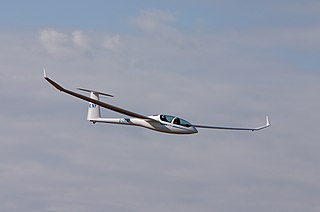
The DG Flugzeugbau DG-1000 is a glider of the Two Seater Class built by DG Flugzeugbau. It has a retractable engine and propeller. It first flew in July 2000 at Speyer in Germany. There are four models, with 18- and 20-metre wings of HQK-51 profile. The latest DG-1001 variant replaced the DG-505 in production.
The Akaflieg Stuttgart fs17 was a glider aircraft that was designed and built in Germany from 1936. It notably featured a prone seating position for its pilot.
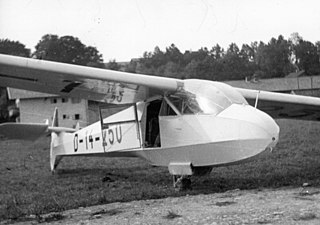
The Akaflieg München Mü15 was a two-seat glider designed and built in Germany in the late 1930s, loosely based on the Mü10. A longer span version, the Akaflieg München Mü20 was still in the design stages when further work was abandoned.
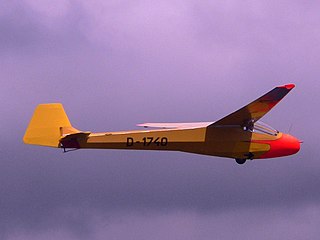
The Akaflieg München Mü17 Merle is a single-place glider aircraft that was designed and built in Germany from 1938.
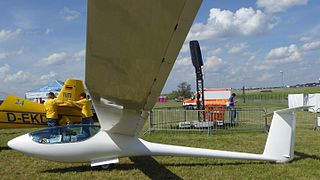
The Akaflieg München Mü31 is a high-performance single-seat glider aircraft that is under design in Germany as of 2010.
Akaflieg Darmstadt is one of approximately twenty aviation groups attached to German universities. Akaflieg is an abbreviation for Akademische Fliegergruppe, an academic group of students and faculty from a German University.
The Akaflieg Darmstadt D-6 Geheimrat, often shortened to Darmstadt D-6 Geheimrat, was an early competition glider with a single seat and high cantilever wing, designed and built by German University students in 1922.
The Akaflieg Darmstadt D-17 Darmstadt, also called the Darmstadt D-17 and Darmstadt I, was a high performance, single seat, cantilever monoplane sailplane, designed and built by a German University student design group in 1927. It was followed in 1928 by the Akaflieg Darmstadt D-19 Darmstadt 2, a similar aircraft with a new profile, longer span wing.
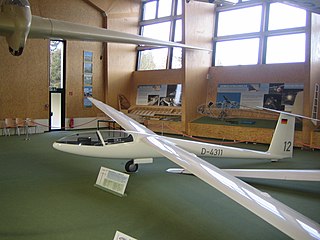
The Akaflieg Darmstadt D-36 Circe is a single seat, high performance sailplane designed and built in Germany in the mid-1960s, one of the early "glass ships". It was the winner at the German National Championships in 1964 and came second in the World Championships the following year.
The Akaflieg Darmstadt D-40 is an experimental variable geometry single seat sailplane, fitted with almost full span, camber changing flaps for optimum aerodynamics in weak thermals and integrated into the wing so as to minimise flap tip drag. One flew successfully but the D-40, like other variable geometry sailplanes, was not commercialised.

The Darmstadt D-29 was a German experimental monoplane designed and built by Akaflieg Darmstadt. The D-29 was a cantilever low-wing monoplane designed and built during 1936 with a conventional landing gear with a tailskid. It was powered by a Siemens-Halske Sh 14a radial piston engine and had enclosed tandem cockpits, as well as a number of other features, including hydraulically actuated trailing-edge flaps, a braced T-tail and leading-edge slots.
The Akaflieg Braunschweig SB-12 is a single seat, Standard Class sailplane designed around 1980 by German technical university students to test out a new wing profile from the German Aerospace Centre. It was not intended for production, but the sole SB-12 remains active in 2010.
The experimental Hirth Hi-25 Kria was only the second glider constructed from glass reinforced plastic (GRP). Built in Germany in 1958, it was a single seat, 12 m (39.4 ft) span aircraft. Only one was built; it later flew for several years with Akaflieg Stuttgart.
The Akaflieg Braunschweig SB-8 is an experimental, single-seat, high performance glider built in Germany in the 1960s, constructed largely from glass fibre skin over built up balsa wood structure. Two were built; the second of which was later fitted with a high aspect ratio (30:1) wing, becoming the Akaflieg Braunschweig SB-9 Stratus.

The Akaflieg Braunschweig SB-13 Arcus was an experimental tailless, single seat, Standard Class glider designed and built in Germany in the early 1990s. Though it performed as well as its conventional contemporaries, it did not offer sufficiently improved performance to compensate for its difficult handling characteristics.
The Akaflieg Braunschweig SB-6 Nixope was an early (1961) GRP high performance single seat glider designed and built in Germany by aeronautical students from Brunswick University. It competed in the 1961 German National gliding competition, coming sixth, and led directly to two further GRP aircraft.
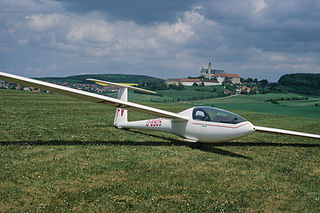
The AK-5 is a single-seat club class sailplane designed and built in Germany by members of Akaflieg Karlsruhe.
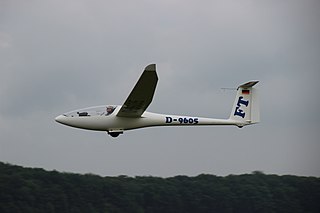
The Akaflieg Karlsruhe AK-5b is a single-seat club class glider designed and built in Germany by members of Akaflieg Karlsruhe.
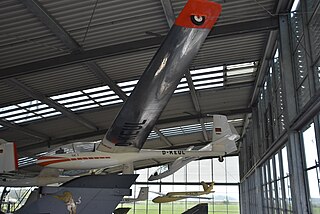
The Akaflieg Karlsruhe AK-1 Mischl is a Motor-glider designed and built in Germany and first flown on 9 January 1971.












